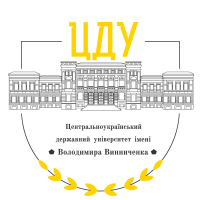COLLOQUIALISMS OR LANGUAGE DEVIATION: LINGUISTIC AND TRANSLATIONAL ASPECTS
Keywords:
colloquialisms; deviation; dialect; sociolect; full transcoding; mixed transcoding; adaptive transcoding.Abstract
The article deals with the peculiarities of colloquial vocabulary as a deviant element of speech, its naming, separation and methods of translation into target language. The ways of realization of colloquial words have been analyzed in the target text through full and adaptive transcoding. Colloquialisms are used by everybody, and their sphere of communication is comparatively wide. These are informal words that are used in everyday conversational speech by cultivated and uneducated people of all groups. Such elements include slang and dialects. Vast use of informal words is one of the prominent features of 20th century English and American literature. In Modern fiction informal words appear in dialogues as well as in descriptive passages. Such informal words are considered to be a kind of language deviation. The main reasons for the functioning of deviations in fiction are as follows: 1) deviation as the main means of creating the image of the characters and the author's picture of the world; 2) the deviation characterizes only individual characters (this way of deviation functioning is used more often, because it creates the image of the hero; 3) the deviation is used as a specific feature to create a certain coloring of the text. This technique is more often used for certain situations, comic effect, or also a conflict situation between the characters. For example, individual interspersed dialectal elements, which are voiced by a particular character, more often uses stylistically refined language, may sound like jokes about other characters who communicate in dialectal speech. To render stylistic coloring of the text created with the help of colloquialisms is an urgent problem for translators. To realize this task a translator should choose a correct strategy taking into account reasons for what the substandard elements have been used in the text. The given investigation shows that the most adequate ways of rendering colloquialisms used in the source language into target language is transcoding full or adaptive one.
References
Бацевич Ф. Основи комунікативної лінгвістики : підручник. Київ: Академія, 2004. – 342 с.
Беликов В. И. Социолингвистика. М. : Рос. гос. гуманит. ун-т, 2001. 315 с.
Бузько С.А. Розмовно-просторічна лексика в текстах української постмодерної прози. Філологічні студії. 2008. Вип.2. – С. 72 – 78.
Бурячок А. А. Функціонально-стилістична оцінка слів у Словнику української мови. К. : Наукова думка, 1969. Вип. III. – С. 87 – 95.
Ерофеева Е. В. Экспериментальное исследование фонетики регионального варианта литературного языка. Пермь, 1997.– 83 c.
Жовтобрюх М. А. Українська літературна мова. К : Наукова думка, 1984. 255 с.
Коваль А. П. Практична стилістика сучасної української мови. Київ: Вища школа, 1987. 3-е вид. – 352 с.
Ларин Б.А. К лингвистической характеристике города: Несколько предпосылок. Москва: Изв. гос. пед. ин-та им. А.И. Герцена. 1977. – С. 189–199.
Леонтьев А. А. Национальные особенности коммуникации как междисциплинарная проблема. Объект, задачи и методы этнопсихолингвистики. Москва. 1977. – С. 5–14.
Мартос С. А. Молодіжний сленг у мовленнєвій структурі м. Херсона : автореф. дис. на здобуття наук. ступеня канд. філол. наук : 10.02.01. Луганськ, 2006. – 21 с.
Миколенко Т.М. Український міський сленг (на матеріалі усного мовлення тернопільців) : автореф. дис. на здобуття наук. ступеня канд. філол. наук : 10.02.01. Київ, 2006. – 21 с.
Селіванова О.О. Основи теорії мовної комунікації: підручник. Черкаси: видавництво Чабаненко Ю.А. 2011. – 350 с.
Ставицька Л.О. Арго, жаргон, сленг: Соціальна диференціація української мови. Київ: Критика, 2005. – 464 с.
Пономарів О.Д. Стилістика сучасної української мови. Київ: Либідь, 1993. – 248 с.
Фурса О. Англіцизми українського молодіжного сленгу: чинники динаміки та проблеми класифікації. Мова та історія : зб. наукових праць. Київ, 2002. Вип. 61. – С. 57–65.
Фурса О., Мосенкіс Ю. Український молодіжний сленг як динамічний феномен (станта перспективи досліджень). Мова та історія : зб. наукових праць. Київ, 2005. Вип. 83. – С. 70–82.
Шовгун Н.О. Формування українського сленгу в мовленнєвій діяльності малих соціальних груп: автореф. дис. на здобуття наук. ступеня канд. філол. наук: 10.02.01.Київ, 2000. – 17с.
Burgess A. A Clockwork Orange: London Pengium Group, 1962. – 122 p.
Берджес Е. Механічний апельсин / пер. з англ. О.Буценка. Київ : Рідна мова, 1990. – 122 с.
Tartt, D. The Goldfinch. NY: Little, Brown and Company. 2016. – 854 p.
Тартт Д. Щиголь / пер. з англ. В. Шовкуна. Київ : Книжковий клуб «Клуб сімейного дозвілля». 2018. – 832 c.








